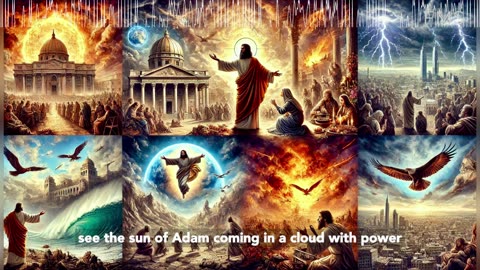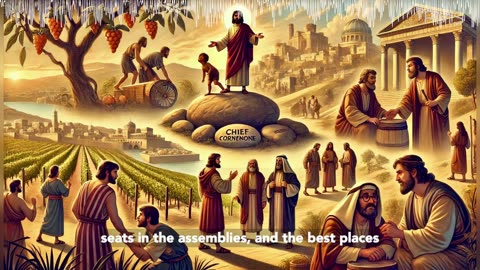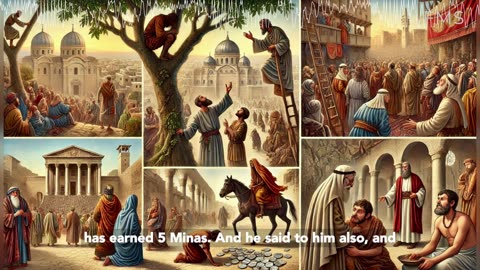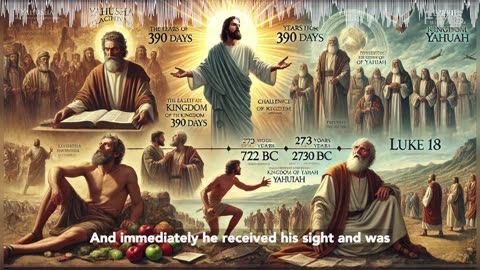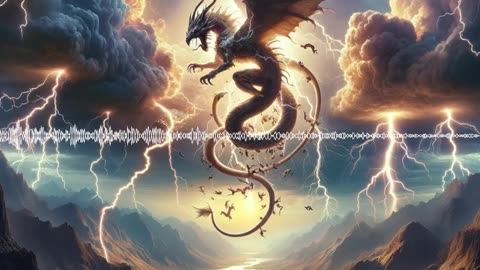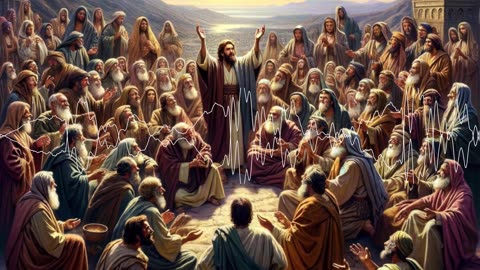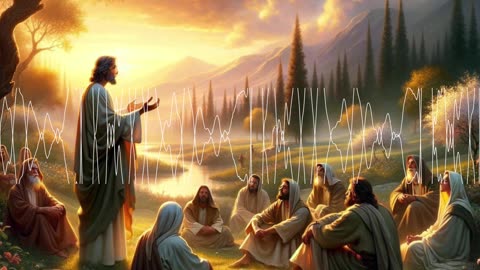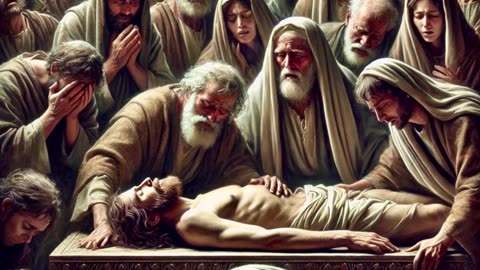
-
"The Agony and Triumph of Yahusha: The Unjust Trial and Ultimate Sacrifice"
ssovereigndaudLuke 23 is a chapter that is both agonizing and profoundly moving, encapsulating the depth of Yahusha's love and sacrifice. Each time we read it, the pain deepens, as we are reminded of the immense suffering he endured for our sake. Here, Yahusha stands strong, forthright, and fearless, embodying truth and selflessness, with the power of heaven and earth at his fingertips. Despite this, he is beaten, mocked, and wrongfully accused, all while knowing the unjust fate that awaits him—death at the hands of those led by the devil himself. Can you imagine the weight of this injustice? We’ve all witnessed unfairness, but nothing compares to this degree. Yahusha became the victim for our crimes, bearing the punishment we deserved. The enormity of this sacrifice is overwhelming, leaving us feeling disgusted by our own shortcomings, yet it also propels us to repent and strive to draw nearer to Yahuah. Consider the perspective of his followers: they were devastated, hoping and begging for a different outcome. They loved him deeply, having witnessed his miracles and compassion. They saw him feed the 5,000, cast out demons, challenge the religious authorities, weep over the death of Lazarus, and then miraculously raise him after four days. They knew he was the embodiment of truth and love, making the agony of his crucifixion all the more unbearable. Luke 23 takes us through Yahusha's harrowing trial before Pilate, his brutal journey to Golgotha, and the excruciating moments of his staking. We see him offer forgiveness even in his final moments, promising paradise to a repentant thief and praying for those who condemned him. His death is marked by supernatural signs and the acknowledgment of his righteousness by a Roman centurion. This chapter isn't just a historical account; it’s a profound testament to the lengths Yahusha went to for our redemption. It calls us to reflect deeply on his sacrifice and to respond with heartfelt repentance and a renewed commitment to follow him.77 views 1 comment -
Title: Luke 21: The Widow's Offering, Prophetic Fulfillment, and Unveiling Historical Mysteries
ssovereigndaudIn Luke 21, Yahusha provides profound teachings and prophecies that resonate deeply with our faith journey. Let's explore these themes together, understanding how they apply to our lives and the world around us. The Widow's Offering: Yahuah values the heart behind our actions more than the amount we give. The widow's offering is a powerful reminder that our Creator sees our sacrifices in relation to our circumstances. How cool is it that Yahuah looks at what it took for you to accomplish what you do with Him in mind. Prophecy of the Temple's Destruction: “These that you see, the days are coming in which not one stone shall be left upon another that shall not be thrown down.” This prophecy was fulfilled around 70 AD when the temple was completely dismantled. According to the writings of Josephus, the Roman siege of Jerusalem resulted in severe famine, leading to cannibalism and brutal family betrayals. Is this a long, drawn-out finale unfolding over millennia? Josephus' Account: In his work, "The Jewish War," Josephus describes the horrors of the Roman siege of Jerusalem in 70 AD. He recounts the desperation of the people, the destruction of the temple, and the widespread famine that led to acts of cannibalism. Josephus writes about a woman named Mary who, in her despair, resorted to consuming her own child (Jewish War 6.3.4). This vivid account underscores the fulfillment of Yahusha's prophecy and the intense suffering experienced during that time. Exploring Historical Mysteries: What if these events had already occurred? Jon Levi’s channel presents fascinating theories with videos showing portions of buildings that have melted and become rocks due to intense heat. These structures are far beyond our current capabilities, and as a builder, I marvel at them. Theories suggest these could be remnants of buildings from Solomon's kingdom or Yahusha's reign. The craftsmanship, allegedly achieved with only horses and no power tools, raises questions about our understanding of history. For more, check out Jon Levi’s channel: Jon Levi on YouTube. The Great Timeline: Imagine Yahusha returned in 70 AD, set up His kingdom, and left briefly as the devil was released for a short time. This would mean we are now awaiting the Gog and Magog war, which will bring a final end to the devil. It fits neatly into a 7-day or 7-thousand-year framework: * Creation to Noah: ~1656 years * Noah to Abraham: ~292 years * Abraham to Moses: ~645 years * Moses to David: ~490 years * David to Yahusha: ~1000 years Regardless of the exact timeline, we find comfort knowing we are safe, protected, and loved by our Creator. Revelation 20: Gog and Magog: Revelation 20:7-10 describes how, after the thousand years, Satan will be released from his prison and will deceive the nations, Gog and Magog, to gather them for battle. They will surround the camp of Yahuah's people, but fire will come down from heaven and devour them. This will be the final defeat of Satan, who will be thrown into the lake of fire forever. Key Scriptures: * Luke 21:6: Prophecy about the destruction of the temple. * Luke 21:1-4: The widow’s offering. * Ezekiel 38-39: Gog and Magog. * Revelation 20:7-10: The final battle and defeat of Satan. References: * Josephus, "The Jewish War": Detailed accounts of the siege and destruction of Jerusalem. * Jewish War 6.3.4 * Jon Levi’s Channel: Exploring historical architecture and theories. * Jon Levi on YouTube Join us as we delve into these profound teachings and consider how history, prophecy, and faith intertwine in our journey with Yahuah.43 views -
Luke 20: Parable of the Vineyard, The Cornerstone, and Eternal Life
ssovereigndaudIn Luke 20, Yahusha's teachings and interactions with the religious leaders reveal profound insights into Yahuah's plan and the nature of His kingdom. Join us as we delve into the parable of the vineyard, the chief cornerstone, the questions about resurrection, and the warning against religious hypocrisy. Key Points and Reflections: 1. Parable of the Vineyard: * Luke 20:9-16: Consider the parable of the vineyard where Yahuah is the owner. He sent His prophets, who were often mistreated, and finally, He sent His Son, whom they killed. This parable suggests that there will be no more prophets in the interim as we await the Great Day of Yahuah, who will come to destroy those who lied, cheated, and murdered. * Verses 17-18: The chief cornerstone will pulverize those who reject Him. "The stone which the builders rejected has become the chief cornerstone" (Psalm 118:22). This cornerstone, Yahusha, will crush those who oppose Yahuah’s will. 2. Spies and Traps: * Luke 20:20-26: The religious leaders sent spies to trap Yahusha with questions about paying taxes to Caesar. However, Yahusha's wisdom prevails as He tells them to "render to Caesar the things that are Caesar’s, and to Yahuah the things that are Yahuah’s" (verse 25). The leaders were blinded by hatred and fear of losing their status, money, and position, preventing them from hearing the good news or appreciating miracles. This teaches us that we cannot serve two masters (Matthew 6:24). 3. Sadducees and Resurrection: * Luke 20:27-40: The Sadducees, who did not believe in the resurrection, posed a hypothetical question about a woman who married seven brothers. Yahusha’s response reveals that in the resurrection, we will be like angels and will never die again, emphasizing that Yahuah is the Alahim of the living (verses 36-38). This gives us hope for eternal life. 4. David’s Riddle: * Luke 20:41-44: Yahusha presents a riddle: How can the Messiah be both David’s son and David’s Alahim? This underscores the mystery of Yahusha being both the Son of Adam and Yahuah in human form, fulfilling the lineage from Adam through Noah, Abraham, and David. This connects to the declaration that "Yahusha is Yahuah" (Jesus is Lord), fitting beautifully into the tapestry of scripture. 5. Warning Against Religious Hypocrisy: * Luke 20:45-47: Yahusha warns us to beware of the religious leaders who seek status and wealth, symbolized by their jets, limousines, and lavish places of worship. These leaders, like those who rejected the cornerstone, are focused on appearances rather than genuine service to Yahuah. For an example, consider the design of the Vatican's audience hall, which some say resembles a snake, symbolizing deceit. Conclusion: Luke 20 challenges us to reflect on the true nature of Yahuah’s kingdom, the importance of sincere faith, and the dangers of religious hypocrisy. Let us embrace Yahusha, the chief cornerstone, and live with the hope of eternal life, keeping our focus on serving Yahuah above all else. Scriptures: * Luke 20:9-16: Parable of the Vineyard * Luke 20:17-18: The Chief Cornerstone * Luke 20:20-26: Spies and Traps * Luke 20:27-40: Sadducees and Resurrection * Luke 20:41-44: David’s Riddle * Luke 20:45-47: Warning Against Religious Hypocrisy Join us as we explore these profound teachings and reflect on their relevance in our lives today.30 views -
Luke 19: Yahusha’s Journey, Zacchaeus’s Transformation, and the Cleansing of the Temple
ssovereigndaudIn Luke 19, Yahusha's interactions and parables reveal profound lessons on grace, repentance, stewardship, and prophecy. His choice to dine with Zacchaeus, a despised tax collector, underscores His mission to seek and save the lost, while the parable of the minas teaches us about accountability and the rewards of faithful service. Yahusha's entry into Yerushalim and His cleansing of the Temple highlight His role as the Messiah and His call for sincere worship. Join us as we delve into these key moments and reflect on their meaning for our lives today. Key Points and Reflections: 1. Yahusha and Zacchaeus: * Luke 19:1-10: When the local celebrity comes to town, the pious ones, acting like “mean girls,” expect He will join their “clique.” But Yahusha is too cool for such antics; He prefers to hang with the black sheep, as He said, "to seek and to save what was lost" (Luke 19:10). It’s a reminder to shine the light inside you whenever you have a safe opportunity. Zacchaeus, being short, cleverly climbs a sycamore tree to see Yahusha. This act of determination and creativity underscores the lengths we should go to in our spiritual quests. 2. Parable of the Minas: * Luke 19:11-27: Yahusha tells the parable of the minas to illustrate the importance of using one's gifts and resources responsibly. The nobleman rewards his faithful servants, while the unfaithful servant faces consequences for his inaction. Growing up on a farm, we had a saying: “Make hay while the sun shines.” This is our opportunity to “make hay” or increase the minas for Yahuah. Just as making hay requires taking advantage of the right conditions, growing our minas requires using the opportunities Yahuah gives us. Much like a child drawing a picture for their parents, our efforts are cherished by Yahuah because He loves us. Our participation is more for our benefit, bringing joy to our hearts, while His will is accomplished regardless. Even though our help may seem feeble compared to all Yahuah did in six days, it's like a child's scribbled drawing given to a parent, received with love and cherished for the love behind it. * Verse 17: "Well done, good servant. Because you were faithful in a very little, you shall have authority over ten cities." Eternity is a long time, and if you keep and teach others to keep the commands, you will be called great in the kingdom of Yahuah. Conversely, if you break them and teach others to do the same, you will be the least (Matthew 5:19). 3. Yahusha's Entry into Yerushalim: * Luke 19:28-40: Yahusha’s triumphal entry fulfills prophecy and receives the praise of His disciples. Despite opposition from the Pharisees, the significance of His coming is undeniable. "Blessed is the King who comes in the Name of Yahuah!" (Luke 19:38). This crucial phrase must be proclaimed, for Yahusha will not return until we all say these words. If we remain silent, the rocks themselves will cry out (Luke 19:40). 4. Yahusha Weeps Over Yerushalim: * Luke 19:41-44: As Yahusha approached Yerushalayim, He wept over the city, lamenting its missed opportunity for peace and foreseeing its impending destruction (Luke 19:41-44). His tears reflect deep compassion and sorrow, urging us to seek peace and recognize the significance of divine visitation. Arriving in Yerushalyim He wept, crying over the entire mess of past, present, and future with sincere tears from the Creator Himself. 5. Cleansing the Temple: * Luke 19:45-48: Yahusha drives out the merchants from the Temple, declaring it a house of prayer that has been turned into a den of robbers. You would think Yahusha would know better than to act up, uncivilized, turning over tables and casting the merchants out of Yahuah’s house. If He tried that today, wouldn’t you love to watch a televised court case with Yahusha acting as His own attorney? Speak up if you see bad actors doing awful, terrible things to children, women, elderly, disabled, and impoverished—it’s part of our heart to do so. * Verse 46: "It is written, 'My house shall be a house of prayer,' but you have made it a 'den of robbers.'" The chief priests, scribes, and leaders hated Him then and now, and so they also hate us. But remember, greater is He that is in us than he who is in the world (1 John 4:4). Conclusion: Luke 19 provides profound insights into Yahusha's mission, the importance of repentance, faithful stewardship, and the recognition of His kingship.39 views -
"Luke 18: The Teachings and Miracles of Yahusha"
ssovereigndaudImagine Yahuah comes to earth as the Son of Adam, as a man, and in less than three years He had to lay down enough teaching, wisdom, and prophecy to carry generations through millennia. We can go to scripture, drink living water, and face anything the world throws at us. How miraculous that we are all bound together by the Ruach HaQodesh, testing and proving what is true, guiding us separately and together in His ways. We have the ability to speak with people all across the earth and have tremendous commonalities. Yahusha's Mission and Goals: * Mission 1: Lay down teachings and wisdom. * Task 2: Pay our debt, as Yahusha said right before He died, "It is finished." * Goal 3: Visit the souls who passed and return to His friends, family, and students alive. * Goal 4: Ascend to heaven, prepare rooms for us, and prepare us for His final return. Key Teachings: 1. Wealth and the Kingdom: * We are asked not to sell out to wealth. While it is possible to be wealthy and enter the kingdom of Yahuah, it is quite difficult. Yahusha reminds us to keep His commands (Luke 18:22-25). 2. Persistence in Faith: * The blind man wanted to see, and despite the crowd telling him to hush, he clamored even louder. This persistence in faith is something we all share as we prepare for Yahusha’s return (Luke 18:38-43). 3. Prophetic Timelines: * Ezekiel's Prophecy: * Ezekiel laid on his side for 390 days to symbolize the years Yisharal would be enslaved. This is found in Ezekiel 4:4-5: "Then lie on your left side and put the sin of the people of Israel upon yourself. You are to bear their sin for the number of days you lie on your side. I have assigned you the same number of days as the years of their sin. So for 390 days you will bear the sin of the people of Israel." * If they do not repent, multiply by 7: "If after all this you will not listen to me, I will punish you for your sins seven times over" (Leviticus 26:18). So, 7 x 390 = 2730 years. * Counting from 722 BC (the Assyrian captivity of Israel) to 2008 AD gives us 2730 years. As the sacred names began to be revealed once again, this generation will not pass without seeing Yahusha return. * The Generation in the Wilderness: * The children who were 20 and under were able to enter the promised land; those older, except Joshua and Caleb, were refused. This is found in Numbers 14:29-31: "In this wilderness your bodies will fall—every one of you twenty years old or more who was counted in the census and who has grumbled against me. Not one of you will enter the land I swore with uplifted hand to make your home, except Caleb son of Jephunneh and Joshua son of Nun. As for your children that you said would be taken as plunder, I will bring them in to enjoy the land you have rejected." * If 20 years is a generation, and we are considering the timeline from 2008, we are looking between now and 2028. This is just an opinion, no one knows but Yahuah Himself the day. Yet, He gives us clues to look for. So exciting! Reflection: Luke 18 invites us to reflect on the profound teachings and miraculous works of Yahusha, binding us together through the Ruach HaQodesh. As we ponder His teachings on wealth, persistence in faith, and prophetic timelines, we are reminded of the incredible journey we are on and the hope we hold for His return. Key Verses: * Luke 18:27: "What is impossible with man is possible with Yahuah." * Luke 18:22: "Sell everything you have and give to the poor, and you will have treasure in heaven. Then come, follow me." * Luke 18:42: "Receive your sight; your faith has healed you." * Ezekiel 4:4-5: "Then lie on your left side and put the sin of the people of Israel upon yourself. You are to bear their sin for the number of days you lie on your side. I have assigned you the same number of days as the years of their sin. So for 390 days you will bear the sin of the people of Israel." * Leviticus 26:18: "If after all this you will not listen to me, I will punish you for your sins seven times over." * Numbers 14:29-31: "In this wilderness your bodies will fall—every one of you twenty years old or more who was counted in the census and who has grumbled against me. Not one of you will enter the land I swore with uplifted hand to make your home, except Caleb son of Jephunneh and Joshua son of Nun. As for your children that you said would be taken as plunder, I will bring them in to enjoy the land you have rejected." Closing Thoughts: As we study Luke 18, let us embrace the teachings of Yahusha, persist in our faith, and eagerly anticipate His return. The clues are given, and while the exact day is unknown, the signs are exciting to witness. Stay vigilant, stay faithful, and let the Ruach HaQodesh guide you.77 views -
"#Luke 17: #Navigating #Stumbling #Blocks, #Forgiveness, and #Faith"
ssovereigndaudJoin us as we delve into Luke 17 and explore Yahusha’s teachings about the challenges and lessons we face as believers. 1. Stumbling Blocks Here are some examples: * False Teachings: Introducing doctrines that contradict the teachings of Yahuah can lead believers astray. * Hypocrisy: Leaders think they must be righteous, but they are just as fallible as the rest of us without the Torah written in our hearts. * Temptation: Encouraging or enticing others to engage in sinful behaviors. * Discouragement: Speaking negatively or discouragingly * Bad Example: Living a life that contradicts the teachings of Yahusha 2. Forgiveness Yahusha teaches us to forgive our brother seven times a day, but only after he admits and repents—not before you anticipate he will repent. 3. Faith and Belief We hope to receive the understanding to move mulberry trees and heal others. It's important to note that healing others often requires belief on the part of the person being healed. If you know more about this issue, please comment below. 4. Gratitude and Healing Only one of the ten lepers healed returned to thank Yahusha, to which He replied, "Your belief has made you well." This makes me wonder what happened to the nine who did not return. Did they remain healed, or not? 5. The Reign of Yahuah The reign of Yahuah does not come with intense watching. Haven't we all been programmed to watch intently? We are given some signs and told these signs are for us to know the times, not to worry. Worry causes fear, which leads to a PTSD plague engulfing the earth. Those of us walking around without fear will soon stand out completely from those who took the mark. 6. The Taken and the Left Two are sleeping; one is taken. Many think this supports the Jesuit teaching of the rapture. However, when separating the wheat from the chaff, the chaff is gathered first and tossed into the fire. Just a thought to ponder. 7. The Eagle and the Body The eagle is a bird of stature but also a predator. Why is it gathering where the body is? In this context, Yahusha tells the story, and the disciples ask, "Where?" It seems they are asking where the ones taken are being taken to. Yahusha responds by saying they are taken to where the eagles gather. This response suggests a place of judgment or significant gathering, highlighting the importance of being spiritually prepared. Reflection: Luke 17 challenges us to consider our actions and attitudes towards others, the nature of faith, and our understanding of Yahuah’s Kingdom. By examining these teachings, we gain deeper insights into living a life of faith, forgiveness, and readiness for the coming of Yahuah’s reign. Scriptural Insights: * Luke 17:34-37: "I tell you, on that night two people will be in one bed; one will be taken and the other left. Two women will be grinding grain together; one will be taken and the other left. 'Where, Lord?' they asked. He replied, 'Where there is a dead body, there the vultures will gather.'"56 views -
Yahusha describes this event wihen Satan falling "like lightning from heaven."
ssovereigndaudYahusha expresses joy and offers a prayer of thanksgiving to Yahuah (God), the Father, for revealing the mysteries of the kingdom to those who are childlike rather than to the wise and learned. He highlights the special relationship between Himself and the Father and the privilege the talmidim have in witnessing these revelations. Yahusha mentions that many prophets and kings desired to see and hear what the talmidim are experiencing but did not have the chance. This section emphasizes the significance of the talmidim's experiences and the revelation of Yahuah's wisdom to the humble.34 views -
Luke 10:1-17 - The Return of the Seventy-Two
ssovereigndaud* In this passage, the seventy-two talmidim (disciples) return from their mission, joyous over their ability to cast out demons in Yahusha's (Jesus') name. Yahusha reminds them that their joy should not come from their authority over demons, but from their names being written in the shamayim (heavens). He acknowledges their success and speaks of witnessing Satan fall like lightning from heaven, symbolizing the defeat of evil. Yahusha tells them he has given them authority over the enemy and that nothing will harm them. The talmidim are encouraged, and Yahusha rejoices in the Ruach HaKodesh (Holy Spirit), thanking the Father for revealing these truths to the simple-hearted rather than the wise and learned.10 views -
Luke 10:25-42 - The Parable of the Good Samaritan and Visit with Martha and Mary
ssovereigndaudThis section begins with the parable of the Good Samaritan, which Yahusha tells in response to a lawyer's question about inheriting eternal life. Through the parable, Yahusha illustrates what it means to "love your neighbor as yourself," depicting a Samaritan helping a wounded man when others passed by. The story teaches the importance of mercy and compassion over ethnic or religious boundaries.28 views 1 comment -
Luke 11:1-29: The Foundation of Prayer and the Call to Faith
ssovereigndaudAligning with the Divine: The Sanctity of Yahuah's Name and Persistent Faith Summary: This portion of Luke 11 unveils Yahusha teaching His disciples the essence of prayer through what could be more fittingly termed "The Prayer of Alignment" or "Yahuah's Prayer." It starts with the exhortation to hallow Yahuah's name, underscoring the need to honor and reverence His name above all, in alignment with the commandment against taking His name in vain and echoing the foundational respect required in the covenantal relationship between Yahuah and His people. Yahusha emphasizes the importance of persistence in prayer, illustrated through the parable of the friend at midnight, encouraging believers to continually seek, ask, and knock with faith in Yahuah's goodness and provision. The narrative progresses to Yahusha casting out a demon, facing accusations, and clarifying the source of His authority. He highlights a divided kingdom's fate, advocating for unity under Yahuah's sovereignty. The section concludes with the sign of Jonah as a testament to Yahusha's messianic identity, urging the generation to seek the light and truth within, symbolizing a call to recognize and revere Yahuah's presence and authority in their lives.54 views
